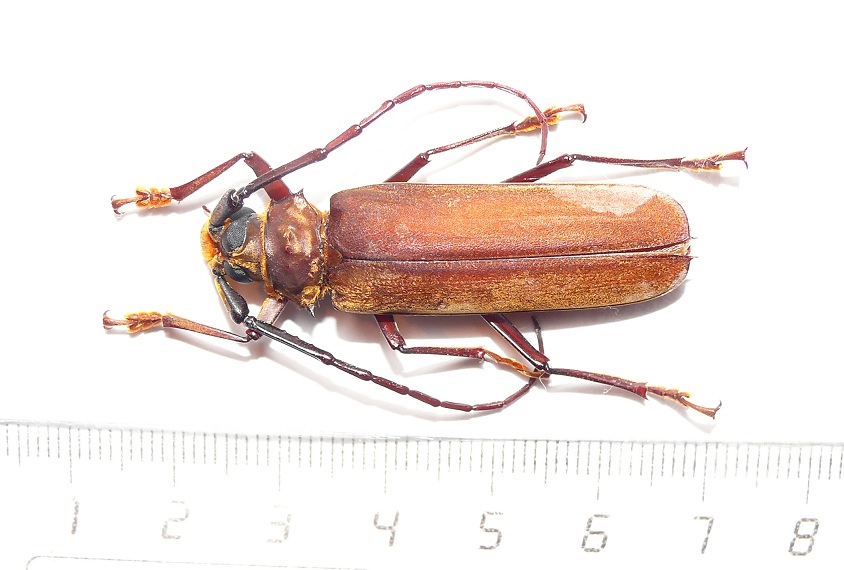| T O P I C R E V I E W |
| dpotanin |
Posted - 22/05/2014 : 09:13:37

106.32 KB
Satipo, Peru
Thank you in advance! |
| 2 L A T E S T R E P L I E S (Newest First) |
| Pierre-Olivier Maquart |
Posted - 22/05/2014 : 11:52:09
Orthomegas cinnamomeus (Linné, 1758) |
| Pierre-Olivier Maquart |
Posted - 22/05/2014 : 11:48:09
Hello,
It's an Orthomegas sp.
I determined mine few days ago 
So -using the key to species from Les Cahiers Magellanes- the scape is pubescent, and only half of it, is covered by pubescence, which means, that you have the choice between Orthomegas maryae and O. cinnanomeus
O. maryae is only known from French Guyana, contrary to O. cinnanomeum which is known from Hispaniola, Trinidad, Colombia, Venezuela, Guyanas, Bresil, Bolivia, Equator and Peru.
So It might be O. cinnanomeus, but -just to be sure- you have to look at the third segment of the antennae: if the antennal pores are large: it's O. maryae , if they are small and reduced, it's O. cinnanomeus |
|
|


